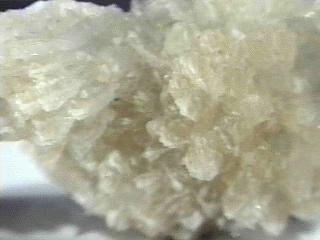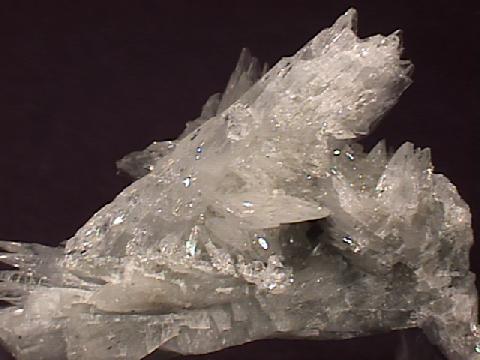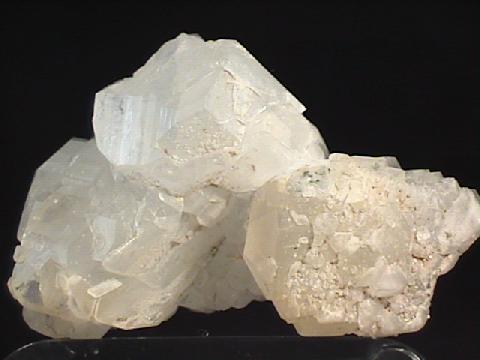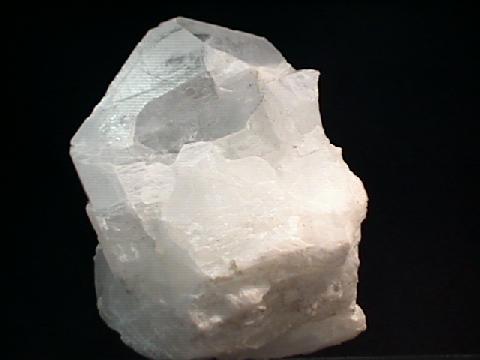 The Mineral COLEMANITE
The Mineral COLEMANITE
- Chemistry: CaB3O4(OH)3-H2O, Hydrated Calcium Borate Hydroxide
- Class: Carbonates
- Subclass: Borates
- Uses: an ore of boron and as a source of borax (a cleaning agent and useful industrial chemical)
Specimens
Colemanite is a secondary mineral, meaning that it occurs after the original deposition of other minerals. The mineral borax is directly deposited in arid regions from the evaporation of water in intermittent lakes called playas. The playas form only in rainy seasons due to runoff from nearby mountain ranges. The runoff is rich in the element boron and is highly concentrated by evaporation in the arid climate. Eventually the concentration is so great that crystals of borax and other boron minerals form. Ground water flowing through the borax sediments at the bottom of the playa is believed to react with the borax and form other minerals such as colemanite. Colemanite is found in geodes within the borax sediment; its exact means of formation are still not well understood.
Colemanite forms small but richly faceted crystals. The short prismatic habit is typical and good crystals with complicated faces are sought after by collectors.
PHYSICAL CHARACTERISTICS:
- Color is white to clear.
- Luster is vitreous.
- Transparency crystals are transparent to translucent.
- Crystal System is monoclinic; 2/m
- Crystal Habits are quite variable, but include the short prismatic crystals always with complicated facets. Equant crystals that appear stubby and bead-like are also common. The crystals are sometimes flattened and can appear bladed. The terminations are either blunted or steeply pyramidal. Also massive, lamellar and granular habits are found.
- Cleavage is perfect in one direction and distinct in another.
- Fracture is uneven.
- Hardness is 4.5
- Specific Gravity is approximately 2.4 (somewhat lower than average)
- Streak is white.
- Associated Minerals are calcite, celestite, borax, ulexite, kernite, hydroboracite and other borate minerals.
- Other Characteristics: exfoliates (peels off) upon heating.
- Notable Occurrences include Yermo, Boron, Death Valley and other California localities, USA; Nevada, USA; Chile and Panderma, Turkey.
- Best Field Indicators are crystal habit, associations, locality, density, cleavage and hardness.



































